Labyrinthulomycetes Dick 2001
Mainly osmotrophic cells capable of producing an ectoplasmic network of branched, anastomosing, wall-less filaments via a specialized organelle known as the bothrosome; Golgi-derived scales; biciliated zoospores with lateral insertion in many species.
Mainly osmotrophic cells capable of producing an ectoplasmic network of branched, anastomosing, wall-less filaments via a specialized organelle known as the bothrosome; Golgi-derived scales; biciliated zoospores with lateral insertion in many species.
1. Amphitremida Gomaa et al. 2013
With two symmetrical pseudopodial tufts; phagotrophic and mixotrophic; no bothrosome.
1.1. Amphitremidae Poche 1913
Test organic with or without attached extraneous material.
1.1.1. Amphitrema Archer 1870
Test organic with attached extraneous material; always with Chlorella symbionts.

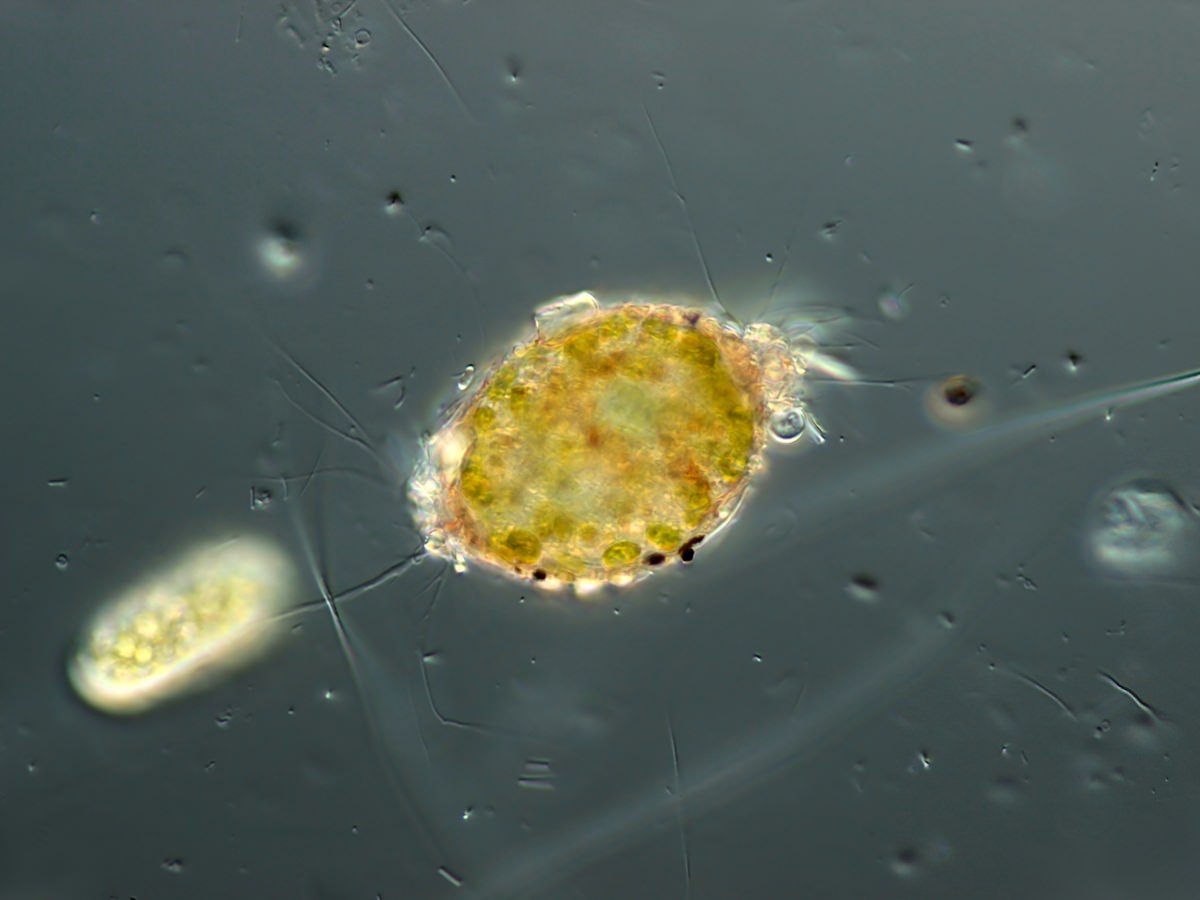
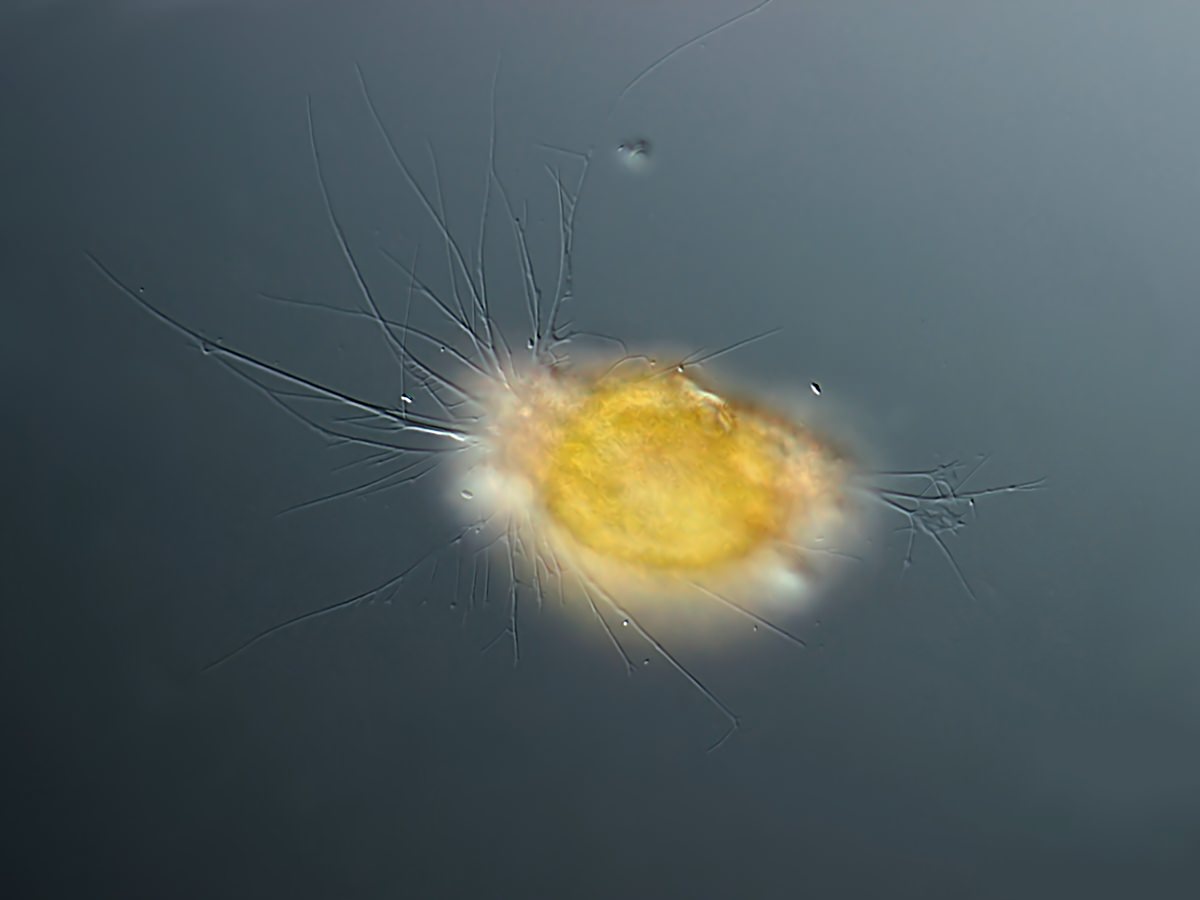
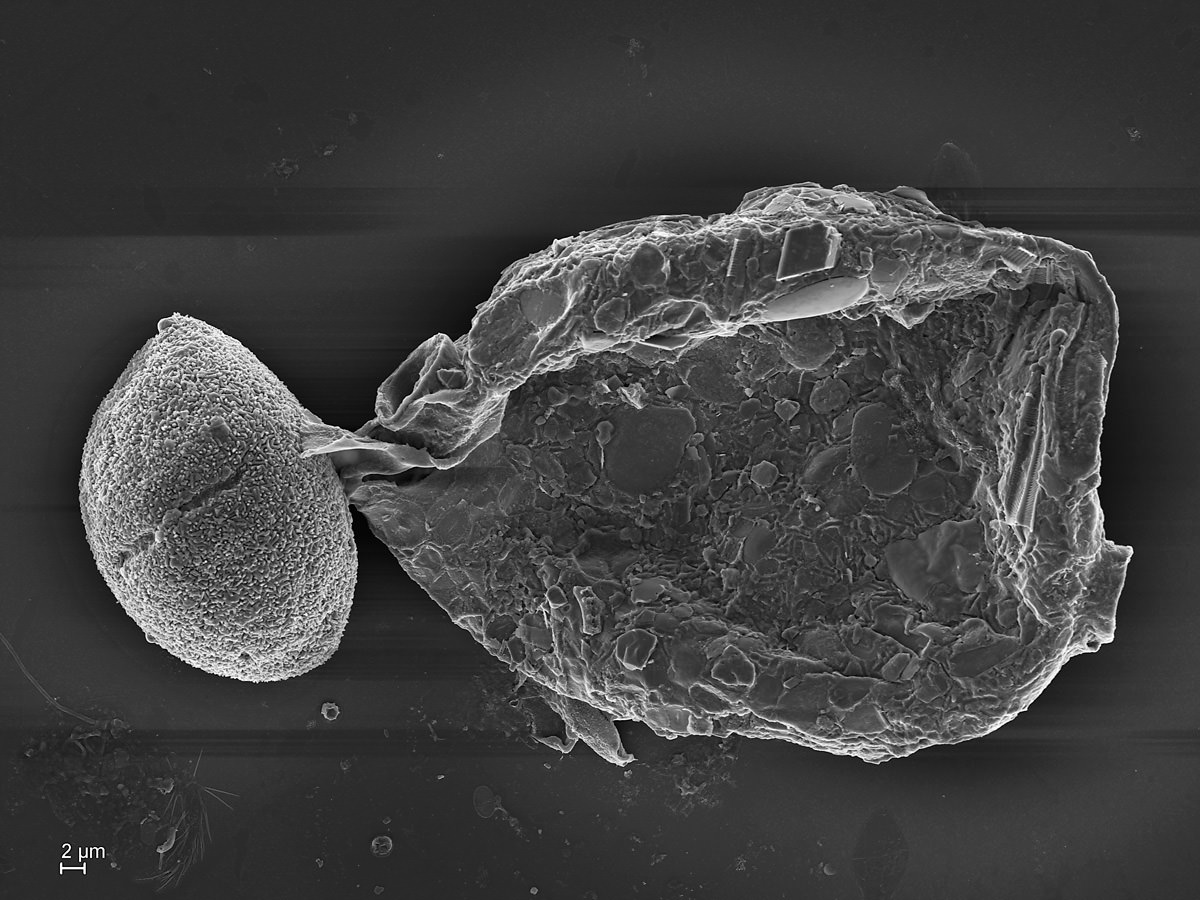

Amphitrema wrightianum Archer 1869
1.2. Diplophryidae Cavalier-Smith 2012
Non-ciliated spherical, unicellular heterotrophic protists with scaly theca; without zoospores; with one or two polar tufts of sometimes branching but not anastomosing ectoplasmic threads stemming from a bothrosome-like structure – if two, passing through the scaly theca on opposite sides of cell but with an offset; with a large (or few smaller), refractive golden yellow or amber lipid drop beside the nucleus. Glide slowly without obviously moving filopodia.
1.2.1. Diplophrys Barker 1868
Cells nearly orbicular or ellipsoid; covered with overlapping Golgi-derived organic disc-shaped scales; an oil-like refractive often orange-to-amber–colored globule immersed in the cytoplasm.
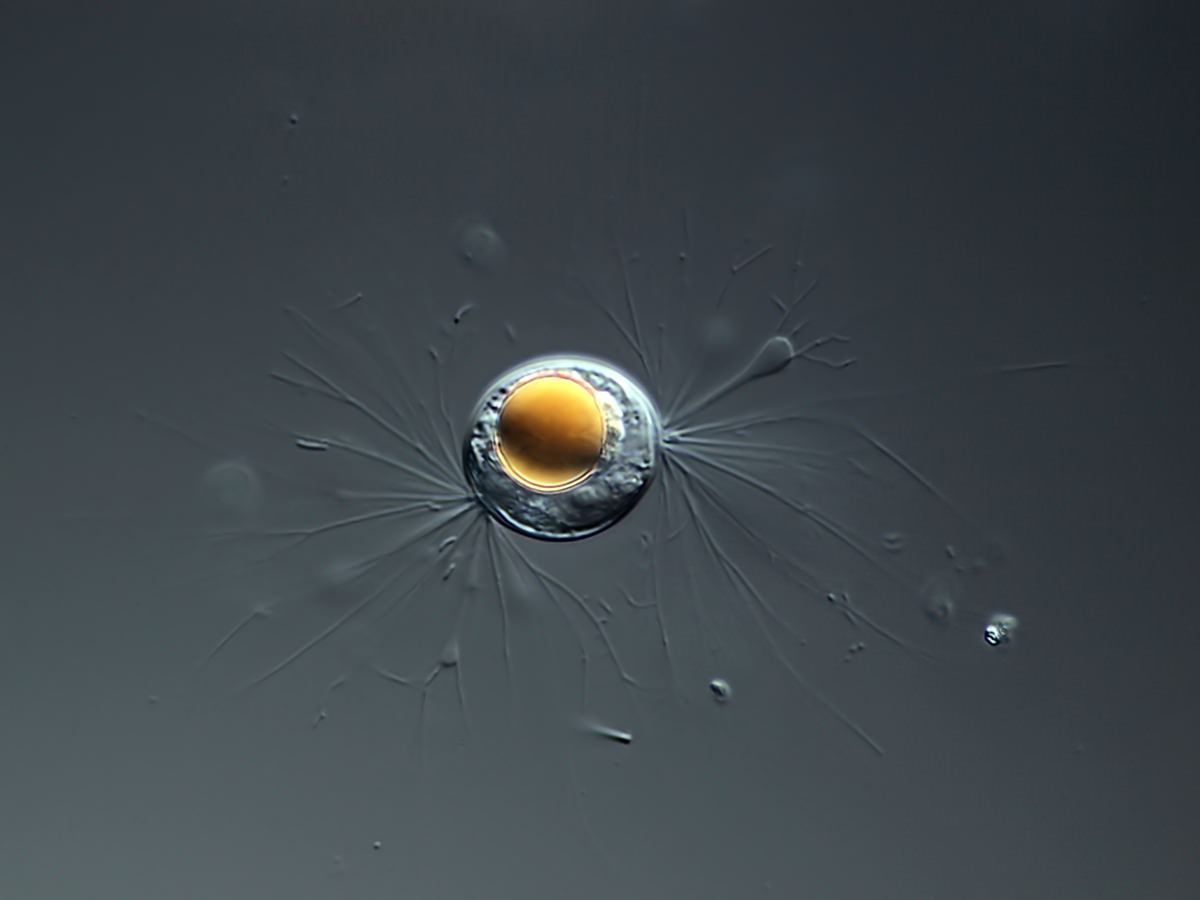
Diplophrys archeri Barker 1868
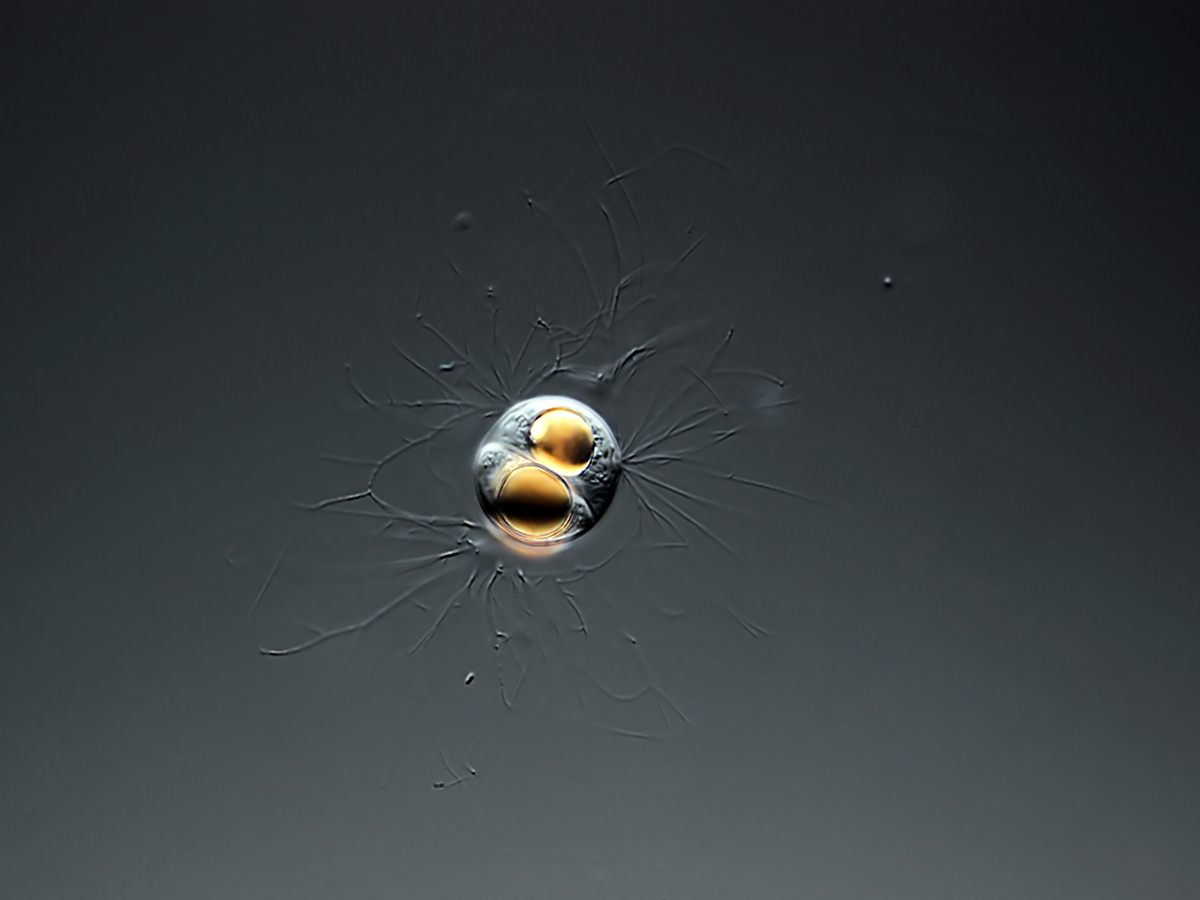
Diplophrys archeri deviding cell.

Diplophrys sp. group with two cells deviding.